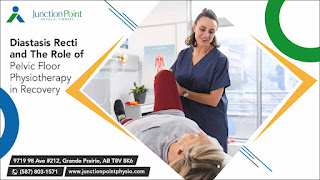Balancing Life: Vestibular Physiotherapy in Grande Prairie

Vestibular physiotherapy is a specialized branch of physical therapy focused on diagnosing and treating vestibular disorders, which affect the inner ear and balance. At Junction Point Physical Therapy, we recognize the profound impact vestibular physiotherapy in Grande Prairie offers targeted therapies to help patients regain their balance, reduce symptoms, and improve their overall quality of life. Benign Paroxysmal Positional Vertigo (BPPV): A condition where brief episodes of vertigo are triggered by changes in head position. Labyrinthitis and Vestibular Neuritis: Inflammation of the inner ear or vestibular nerve causing vertigo and balance problems. Meniere's Disease: A disorder of the inner ear characterized by vertigo, hearing loss, tinnitus, and a feeling of fullness in the ear. Post-Concussion Syndrome: Vestibular symptoms can occur following a concussion or head injury, affecting balance and visual stability. Comprehensive Assessment and Diagnosis At Junction Point Phys...




